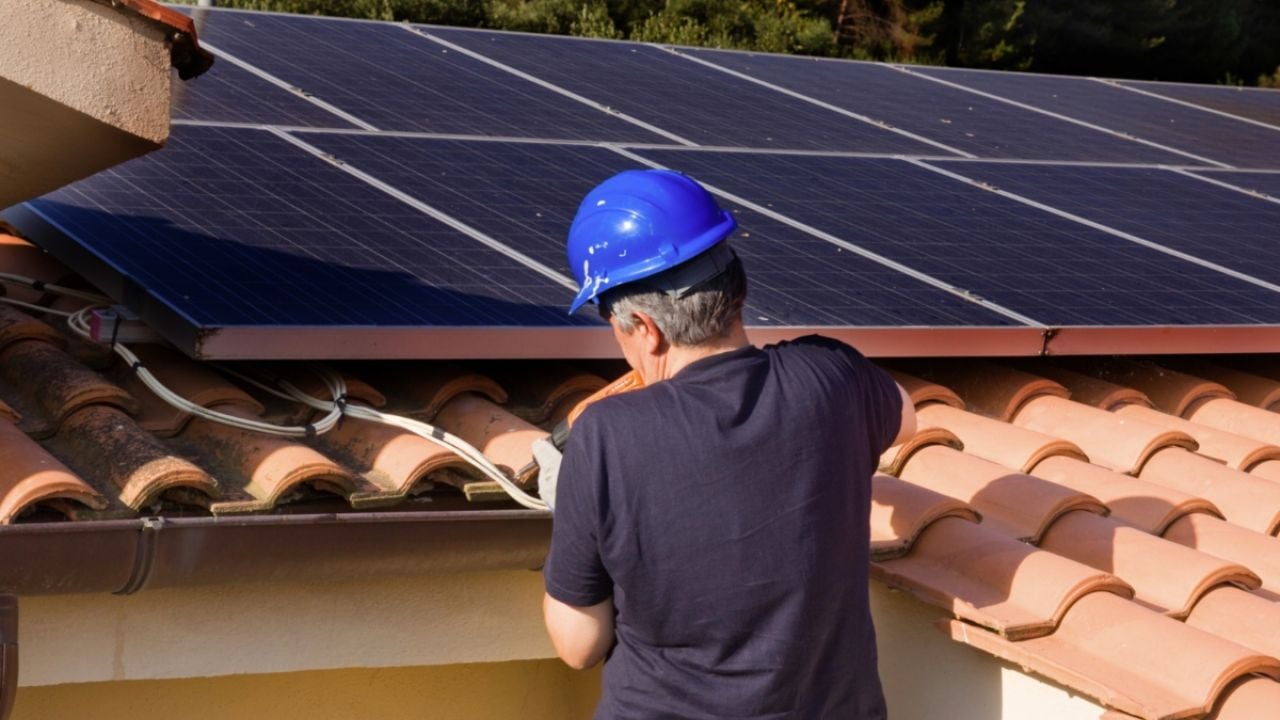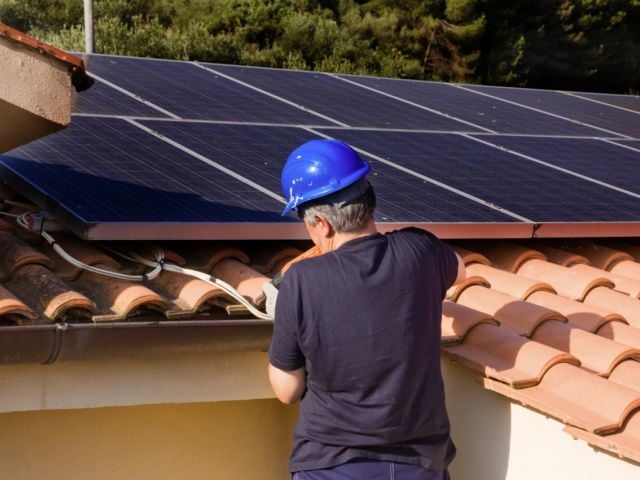
Should California’s utility regulators be allowed to make sweeping energy policy decisions without fully considering the benefits of rooftop solar to all Californians? And are those decisions exempt from judicial review?
These are the two key questions the state’s Supreme Court may soon answer in a closely watched case that could significantly impact the future of solar energy in California. The ruling is expected this summer.
The court heard arguments June 4 in a legal challenge brought against changes the California Public Utilities Commission, or CPUC, made to a popular solar incentive program, known as net metering. In 2022, the CPUC issued a decision that slashed the compensation that rooftop solar owners receive from sharing excess power generated from their panels with their neighbors.
The decision, which took effect in April 2023, replaced net metering with a far less effective incentive program called “net billing.”
Since then, solar installations have dropped sharply across the state, causing ongoing harm to the industry and ratepayers, and slowing California’s progress toward clean energy goals.
Suit challenges CPUC’s decisions
EWG, the Center for Biological Diversity and the Protect Our Communities Foundation filed the suit, arguing that the CPUC made a hugely important decision on state energy policy without proper accountability and in violation of state law. They contend that the CPUC’s 2022 decision is having a direct, damaging impact on public health and the environment, as well as the pocketbooks of all California ratepayers.
In making its highly controversial net metering decision, the CPUC focused solely on how net metering affects California’s powerful investor-owned utilities, the groups claim, while ignoring state law which mandates they consider all of the benefits of rooftop solar to all ratepayers, to the grid and to the state’s environmental goals.
“This lawsuit is incredibly important on two fronts. First, on process, it challenges the CPUC’s contention that its decisions are above the law and that it can make decisions independent of judicial review,” said Bernadette Del Chiaro, EWG’s senior vice president for California.
“Second, on substance, it claims the CPUC acted illegally in significantly weakening California’s popular and powerful rooftop solar program without considering all the benefits to the grid, society or all ratepayers,” she said.
Undermining rooftop solar
The commission’s 2022 decision sharply reduced the bill credits new solar users receive for sharing excess energy with the grid, effectively gutting the state’s net metering program and replacing it with net billing.
The results were immediate and severe: Rooftop solar installations plummeted, thousands of solar workers lost their jobs and local solar companies across California began going under. Most recently, industry leaders Mosaic and Sunrova filed for bankruptcy protection, underscoring the devastating ripple effects of the policy shift.
The three groups that filed the suit allege that the CPUC violated state law when it prioritized California’s powerful investor-owned utilities and failed to consider the broad societal and grid benefits of rooftop solar. The groups are pushing to restore fair compensation for solar and restore the state’s once-thriving rooftop solar market.
The court’s upcoming decision could set an important precedent on whether the CPUC must fully consider the broad benefits of rooftop solar to the grid, public health and all ratepayers when making sweeping changes to energy policy – or can it continue making decisions that primarily serve utility interests?
Solar threatens utilities’ bottom line
Pacific Gas & Electric and the state’s other two investor-owned power companies – San Diego Gas & Electric and Southern California Edison – see rooftop solar as a financial threat to their business model.
The utilities’ profits rely on siting power plants at great distances from the California cities and towns they serve. They view rooftop solar and other forms of community-driven clean energy investments as competition and have ramped up a misleading PR campaign claiming rooftop solar harms low-income ratepayers and communities of color.
The truth is just the opposite. A strong rooftop solar market is beneficial to all ratepayers and especially beneficial for low-income and disadvantaged Californians.
Over 60% of California’s two million rooftop solar users are low- or middle-income, and over half are families of color, according to the Lawrence Berkeley National aboratory. More than 300,000 renters, mostly low-income, have lower monthly utility bills, thanks to rooftop solar – a critical lifeline as energy costs rise.
“A major question that the Supreme Court is wrestling with is whether courts have to defer to the CPUC’s decision-making, or whether the CPUC’s choices must be subject to more oversight,” said Caroline Leary, EWG’s chief operating officer and general counsel.
“No government agency should be above the law – the courts must serve as a critical check to ensure the commission is held accountable and acting in the public’s best interest,” she said.
Seeking reversal of damage
The groups are looking for the justices to issue a ruling that reverses the damage caused by the CPUC’s net metering changes, forcing the commission to fully consider the wide-ranging advantages of the program.
Such a ruling could set an important precedent forcing the CPUC to weigh impacts to the grid and society in its future decisions. And it might help reverse some of the damage caused by the net metering decision if the commission undoes some of the worst changes.
“To put it very simply, the CPUC has come to see itself as a protector of utility profits instead of a protector of consumers and the environment,” said Del Chiaro. “Nowhere is the capture of California’s most powerful energy agency more clear and the ramifications to consumers and the environment more stark than in the fight over net metering.
“California should prioritize people and the planet in its decision-making on energy, not the profits of investor-owned utilities,” she added.



